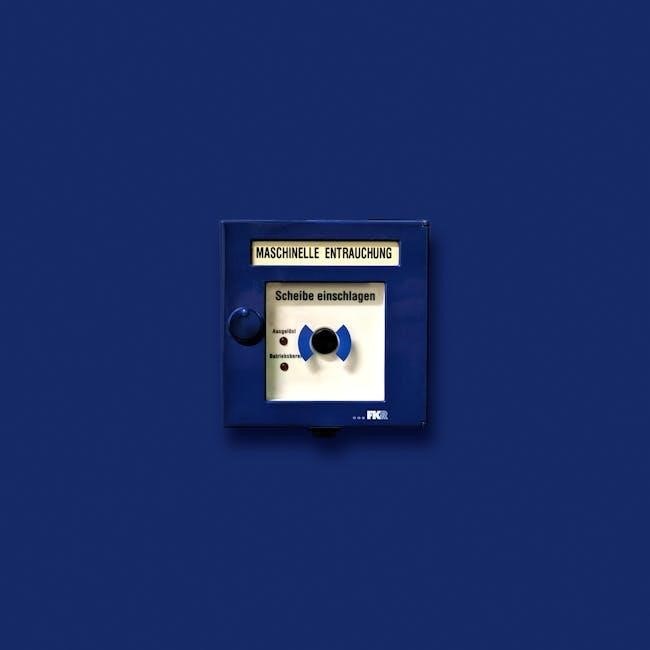list of heart words pdf
What are Heart Words?
Heart Words represent the core of irregular sight vocabulary, demanding memorization alongside phonetic skills.
Resources, like readily available PDF lists, categorize these words by grade level – Kindergarten, First, and Second – for structured learning.
These PDF downloads streamline lesson planning, offering a clear sequence for introducing and reinforcing these crucial, non-decodable elements of reading.
Definition and Importance
Heart Words are high-frequency words that cannot be entirely decoded using traditional phonics rules; they require memorization as a whole unit. These aren’t simply “sight words,” but rather words with irregular spellings that students must learn “by heart.”

Understanding this distinction is crucial for effective instruction. PDF lists, often organized by grade level (Kindergarten, First, and Second, as found in UFLI resources), provide a structured approach to introducing these words.
The importance lies in fluency. Mastering Heart Words allows students to read and write more smoothly, freeing up cognitive resources for comprehension. Accessing these PDF resources simplifies implementation, offering teachers a readily available curriculum component. Consistent practice, utilizing these lists, builds automaticity and confidence in young readers.
Heart Words vs. Sight Words
While often used interchangeably, Heart Words differ from traditional “sight words.” Sight word lists historically included many decodable words, encouraging rote memorization even when phonics could apply. Heart Words, however, specifically target words with irregular spellings – those parts that don’t follow phonetic rules.
This nuanced approach, supported by resources like UFLI’s PDF lists (available for Kindergarten, First, and Second grade), emphasizes understanding why a word is irregular. Teachers can use these PDFs to pinpoint the non-phonetic elements within each word.
The goal isn’t just memorization, but a conscious recognition of the irregular parts. This distinction is vital for building strong decoding skills alongside automaticity with truly irregular vocabulary, as detailed in available learning materials.

The UFLI Foundations Approach to Heart Words
UFLI Foundations systematically introduces Heart Words, utilizing a scope and sequence detailed in accessible PDF lists. These PDF resources organize words by lesson, grade level, and skill.
Understanding the UFLI Framework
UFLI Foundations employs an explicit and systematic approach to literacy instruction, and its Heart Word component is central to this philosophy. The framework recognizes that while many words follow predictable phonetic patterns, some require memorization due to irregular spellings. This is where Heart Words come into play.
The UFLI program provides comprehensive PDF lists, meticulously organized by grade level – Kindergarten, First, and Second – and further broken down by lesson. These PDF resources aren’t simply lists; they represent a carefully sequenced progression, ensuring students build a strong foundation in recognizing and recalling these essential, yet irregular, words.
Each PDF typically outlines the target Heart Word for a specific lesson, alongside guidance on how to introduce and practice it effectively. The framework emphasizes multi-sensory techniques to aid memorization, moving beyond rote repetition to foster genuine understanding and retention. Utilizing these PDF guides empowers educators to deliver consistent and impactful instruction.
UFLI Heart Word List ౼ Kindergarten
The UFLI Foundations Kindergarten Heart Word list, readily available as a PDF, introduces foundational irregular words crucial for early reading success. This PDF resource systematically presents words like “a,” “I,” “to,” “the,” “said,” and “of,” building a core vocabulary that transcends phonetic predictability.
The list within the PDF is not presented randomly; it follows a carefully designed sequence, introducing words gradually to avoid overwhelming young learners. Educators can download this PDF and utilize it to plan lessons, ensuring consistent and explicit instruction.
The UFLI Kindergarten Heart Word PDF is a vital tool for supporting students in developing automaticity with these high-frequency irregular words, laying the groundwork for fluent reading and comprehension. It’s a cornerstone of the program’s effective approach.
UFLI Heart Word List ౼ First Grade
The UFLI Foundations First Grade Heart Word list, conveniently accessible as a PDF download, expands upon the Kindergarten foundation, introducing more complex irregular words. This PDF resource includes words like “have,” “was,” “are,” “some,” “come,” and “there,” building upon previously learned concepts.
The sequential nature of the list within the PDF is key; words are introduced strategically, building on phonetic skills while addressing those that require memorization. Educators can easily download the PDF and integrate it into their lesson plans for consistent practice.
Utilizing the UFLI First Grade Heart Word PDF empowers students to tackle increasingly challenging texts with confidence, fostering fluency and comprehension. It’s a critical component of the program’s systematic approach to reading instruction.
UFLI Heart Word List ⎻ Second Grade
The UFLI Foundations Second Grade Heart Word list, available as a comprehensive PDF, represents the culmination of the early foundational skills. This PDF resource introduces words like “said,” “of,” “see,” “again,” “every,” and “could,” building upon the Kindergarten and First Grade sequences.
The carefully curated list within the PDF focuses on words frequently encountered in texts, ensuring practical application. Educators can download the PDF and utilize it for targeted instruction, reinforcing automaticity through repeated exposure and multi-sensory activities.
Mastering these Heart Words, as outlined in the UFLI PDF, is crucial for developing fluent reading and confident writing skills. It prepares students for more complex texts and independent reading experiences.

Accessing Heart Word Lists in PDF Format
PDF resources offer convenient access to organized Heart Word lists for Kindergarten, First, and Second Grade.
These free, printable PDFs simplify lesson planning and word practice!
Free Printable PDF Resources
Numerous online platforms provide free, downloadable PDF resources dedicated to Heart Words. Literacy Learn offers links to a wealth of free materials, including slides, worksheets, and videos, designed to make teaching irregular words both easy and effective.
Specifically, a readily available PDF compilation contains ALL UFLI Heart Words for Kindergarten, First Grade, and Second Grade. This comprehensive printable is invaluable for educators, clearly outlining which words to introduce with each lesson.
These PDFs aren’t just lists; they are structured learning tools. They facilitate a systematic approach to mastering these essential, yet often challenging, sight words, supporting students’ reading and spelling development. Utilizing these resources saves valuable preparation time.
Downloading and Utilizing UFLI PDF Lists
Accessing the UFLI Heart Word PDF lists is straightforward. Numerous educational websites host these free resources, allowing for immediate download. Once downloaded, these PDFs become invaluable tools for lesson planning and student practice.
Utilizing these lists effectively involves a systematic approach. Teachers can follow the UFLI sequence, introducing words gradually by lesson. The PDF format allows for easy printing, creating individual student copies or classroom displays.
Furthermore, these lists support differentiated instruction. Educators can select specific words for targeted intervention or enrichment. The clear organization within the PDF streamlines the process of identifying and addressing individual student needs, fostering reading success.

Teaching Strategies for Heart Words

Effective strategies combine phonics with memorization, utilizing PDF lists for structured practice. Multi-sensory techniques and methods like “Tap, Map, Zap” boost retention.
Heart Word slides and worksheets, often found alongside PDF resources, enhance engagement and solidify learning.
Multi-Sensory Techniques
Engaging multiple senses is paramount when teaching Heart Words, especially those defying typical phonetic rules. Utilizing a PDF heart word list as a visual anchor, students can trace letters in sand or write them in shaving cream – kinesthetic learning at its finest!
Auditory reinforcement involves saying the word aloud, breaking it into syllables, and clapping along. Visual learners benefit from color-coding tricky parts within the words on the PDF.
Tactile experiences, like building words with playdough or magnetic letters, solidify memory. Combining these approaches, guided by a structured PDF progression, caters to diverse learning styles and fosters deeper understanding of these essential, yet irregular, words.
Remember to consistently refer back to the PDF list during practice!
The “Tap, Map, Zap” Method
The “Tap, Map, Zap” method is a highly effective multi-sensory strategy for mastering Heart Words, often used in conjunction with a structured PDF heart word list. First, students “Tap” each sound within the word, even the irregular parts, acknowledging the letters.
Next, they “Map” the word, writing it out while verbally sounding it out, focusing on the tricky parts identified from the PDF. Finally, they “Zap” the word – quickly saying it several times to build fluency and automaticity.
Using a PDF list ensures a systematic approach, introducing words in a logical sequence. This method reinforces phonemic awareness while simultaneously building memory for those non-decodable elements, leading to confident reading and spelling.
Using Heart Word Slides and Worksheets
Integrating Heart Word Slides and Worksheets, often sourced from PDF resources, significantly enhances learning. Slides provide a visual anchor, displaying the word and allowing for guided practice, referencing the sequence in a PDF list.
Worksheets, readily available as PDF downloads, offer opportunities for independent practice – tracing, writing, and identifying the words in context. These materials reinforce the irregular parts of the words, building automaticity.
A well-structured PDF list ensures a progressive introduction of words, aligning with the slides and worksheets. This multi-faceted approach caters to diverse learning styles, solidifying retention and fostering reading fluency.

Resources for Heart Word Practice
Numerous online games and tutorials complement PDF-based Heart Word lists, offering engaging practice. These digital tools reinforce recognition and recall of irregular words.
Utilizing these resources alongside printable PDFs creates a dynamic learning experience.
Online Games and Activities

Interactive online platforms provide a fun and engaging way to practice Heart Words, supplementing traditional PDF list study. Many websites offer free games specifically designed to reinforce the recognition and spelling of these irregular sight words.
These games often incorporate elements of competition and reward, motivating students to actively participate. Activities range from simple matching exercises to more complex sentence-building challenges, all centered around mastering the Heart Word vocabulary presented in PDF resources.
Digital flashcards and quizzes are also readily available, allowing for personalized practice and tracking of progress. Utilizing these online tools alongside printable PDF lists creates a well-rounded and effective learning experience, catering to diverse learning styles and preferences.
Heart Word Videos and Tutorials
Visual learning is powerfully supported by Heart Word videos and tutorials, complementing the use of PDF lists. These resources often demonstrate proper pronunciation and provide mnemonic strategies for remembering tricky spellings.
Many educators have created video series that align directly with popular Heart Word curricula, like UFLI, making it easy to follow a structured learning path. These tutorials frequently model the “Tap, Map, Zap” method or similar multi-sensory techniques, reinforcing learning through demonstration.
Accessing these videos alongside printable PDF lists allows students to see and hear the words in context, enhancing comprehension and retention. Online platforms host a wealth of free content, offering diverse explanations and approaches to mastering these essential irregular words.

Creating Your Own Heart Word Resources
Personalized learning thrives with custom materials! Supplement PDF lists by crafting unique activities tailored to student needs, boosting engagement and solidifying mastery;
Adapt existing PDF content or design new exercises for focused practice.
Customizing Lists for Individual Needs
Individualized instruction is paramount, and leveraging PDF heart word lists allows for targeted adjustments. Not all students require the same pace or focus. Begin by assessing each learner’s current mastery, identifying specific words causing difficulty.
Then, modify the PDF list – perhaps highlighting priority words, creating smaller, more manageable subsets, or adding personalized mnemonic devices. Consider a student’s learning style; visual learners might benefit from color-coding, while kinesthetic learners could use manipulatives alongside the PDF words.
Furthermore, don’t hesitate to add words encountered in their reading material that aren’t on the standard PDF list. This ensures relevance and reinforces the connection between learning and application. Remember, the goal is to build confidence and fluency, one heart word at a time!
Developing Engaging Activities
Transforming PDF heart word lists into interactive experiences is key to retention. Move beyond rote memorization! Utilize the lists to create games like “Heart Word Bingo” or “Memory Match,” focusing on rapid recognition.
Incorporate multi-sensory approaches: have students trace words from the PDF in sand, build them with playdough, or write them in the air. “Tap, Map, Zap” – a popular technique – pairs well with these lists, breaking down the word into sounds and then ‘zapping’ the irregular part.
Leverage technology! Create digital flashcards from the PDF, or use online platforms for interactive quizzes. The more fun and varied the activities, the more effectively students will internalize these essential, yet tricky, words.
Troubleshooting Common Challenges
PDF heart word lists reveal patterns of difficulty; consistent review and targeted practice are vital. Address specific stumbling blocks with individualized support and repetition.
Regular assessment, using the PDF as a guide, ensures long-term retention and identifies areas needing reinforcement.
Students Struggling with Specific Words
Identifying problem areas is key when utilizing a heart word list PDF. Some students consistently falter with particular words, despite repeated exposure. This often indicates a need for a more focused, multi-sensory approach. Break down the word into its visual components, encouraging students to “trace and say” each part.
Utilize the PDF list to pinpoint which words consistently cause difficulty. Create flashcards focusing solely on those troublesome terms. Implement the “Tap, Map, Zap” method – tapping each part, mapping the sound, and then zapping the whole word.
Consider the visual similarity to other words; confusion can arise from subtle differences. The PDF can serve as a reference to compare and contrast. Remember, patience and individualized attention are crucial for overcoming these hurdles, fostering confidence and progress.
Maintaining Long-Term Retention
Consistent review is paramount for heart word mastery, and a PDF list becomes an invaluable tool. Don’t simply introduce and move on; spaced repetition is vital. Integrate previously learned words into new lessons, subtly reinforcing recognition.
Utilize the PDF list for quick, daily warm-up activities – a rapid flashcard review or a short dictation exercise. Encourage students to create their own sentences using heart words, demonstrating understanding in context.
Games and online activities (linked from resources accompanying the PDF) can make review engaging. Regularly revisit older lists alongside new material, solidifying connections and preventing forgetting. This sustained practice ensures long-term retention and fluent reading.

The Role of Phonemic Awareness
Phonemic awareness builds a foundation, even with irregular Heart Words. While memorization is key, connecting sounds within the word—using a PDF list—strengthens recall.
Blending and segmenting skills aid in recognizing the whole word form.
Connecting Heart Words to Phonological Skills
Although Heart Words are, by definition, not fully decodable, acknowledging their phonetic components is vital. Utilizing a PDF list organized by UFLI lessons allows teachers to pinpoint where phonetic skills have been taught.
For example, even within “said,” students can identify the /s/ sound. This connection isn’t about sounding it out, but recognizing familiar sound-letter correspondences within the irregular word.
Activities should encourage students to tap out sounds they can decode within the Heart Word before memorizing the irregular part. This bridges the gap between phonics and sight recognition. A well-structured PDF resource will highlight these opportunities.
Reinforcing these links strengthens overall phonological awareness and supports long-term retention of these essential words.
Blending and Segmenting with Heart Words
While Heart Words defy complete phonetic decoding, incorporating blending and segmenting exercises enhances learning. A PDF list, like those from UFLI, can be used to select words with partially decodable components.
For instance, with “have,” students can blend /h/ and /æv/ – acknowledging the irregular ‘e’ at the end. This isn’t about decoding the whole word, but reinforcing existing phonemic skills.
Segmenting involves breaking the word into its sounds, even if some are unconventional. Using a PDF resource to track progression ensures appropriate word selection.
These activities solidify the understanding that words are composed of sounds, even when those sounds don’t follow typical patterns, boosting confidence and fluency.
Heart Words and Dyslexia
Heart Word instruction, utilizing structured PDF lists, is vital for dyslexic learners. Explicit, multi-sensory approaches, guided by these resources, support memory and fluency.
Targeted practice with PDF-provided words builds confidence.
Supporting Students with Reading Difficulties
Supporting students facing reading challenges requires a systematic and explicit approach to Heart Words. Utilizing readily available PDF lists, organized by grade level (Kindergarten, First, and Second), provides a structured framework for instruction. These PDF resources are invaluable for breaking down the learning process into manageable steps.
For students with dyslexia or other reading difficulties, rote memorization alone isn’t sufficient. Pairing the visual representation of the Heart Word (from the PDF) with tactile and auditory reinforcement is crucial. Multi-sensory techniques, like tracing the letters while saying the sounds, can significantly improve retention. Consistent review, leveraging the sequential order presented in the PDF lists, is also essential for building long-term memory and automaticity.
Remember to provide ample opportunities for practice and celebrate small successes to foster a positive learning environment.
Adapting Strategies for Diverse Learners
Effective Heart Word instruction necessitates tailoring strategies to meet the unique needs of diverse learners. Utilizing PDF lists, categorized by grade level – Kindergarten, First, and Second – offers a foundational structure, but flexibility is key. For visual learners, emphasize the shape of the word within the PDF, while kinesthetic learners benefit from multi-sensory activities.
Students requiring additional support may need smaller, more frequent practice sessions using selections from the PDF. Conversely, advanced learners can be challenged with more complex sentences incorporating the Heart Words. Differentiated instruction, guided by the sequential progression in the PDF lists, ensures all students experience success.
Remember to consistently assess understanding and adjust strategies accordingly, fostering an inclusive and supportive learning environment.
Future Trends in Heart Word Instruction
Digital PDF lists are evolving with interactive features, offering personalized practice. AI-driven tools may analyze student performance on Heart Word PDFs, adapting lessons dynamically for optimal learning.
Research and Development
Ongoing research focuses on refining the selection criteria for Heart Words included in PDF lists, ensuring optimal impact on early reading skills. Studies investigate the effectiveness of varying the sequence of words within these PDF resources, aiming to maximize retention and minimize cognitive load.
Researchers are exploring the neurological basis of Heart Word learning, seeking to understand how the brain processes and stores these irregular spellings. This knowledge will inform the development of more targeted instructional strategies and more effective PDF-based practice materials. Furthermore, investigations are underway to determine the ideal frequency and duration of review needed to solidify Heart Word knowledge, directly impacting the design of PDF practice schedules.
Future development will likely involve creating adaptive PDF lists that adjust to individual student needs, providing personalized learning pathways.
Emerging Technologies
Interactive PDF formats are evolving, moving beyond static Heart Word lists to incorporate embedded audio pronunciations and self-checking exercises. Artificial intelligence (AI) is being explored to generate personalized PDF practice sheets, adapting to each student’s specific error patterns with irregular words.
Augmented reality (AR) applications are in development, allowing students to scan Heart Word PDF pages and engage with 3D models or interactive games that reinforce learning. Gamification is being integrated into digital PDF resources, transforming practice into engaging challenges. These technologies aim to enhance motivation and improve long-term retention of these crucial sight words.
Machine learning algorithms can analyze student performance data from digital PDF activities, providing teachers with valuable insights into individual learning needs and informing instructional decisions.
















































































